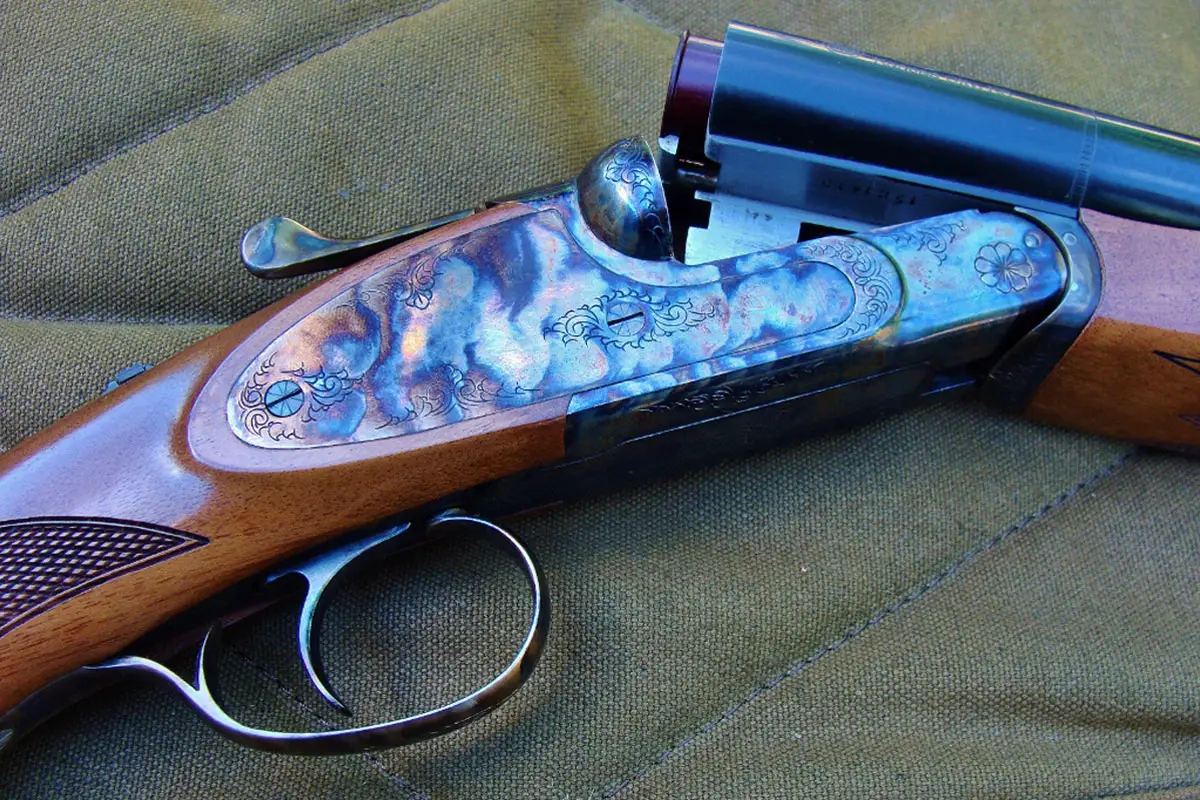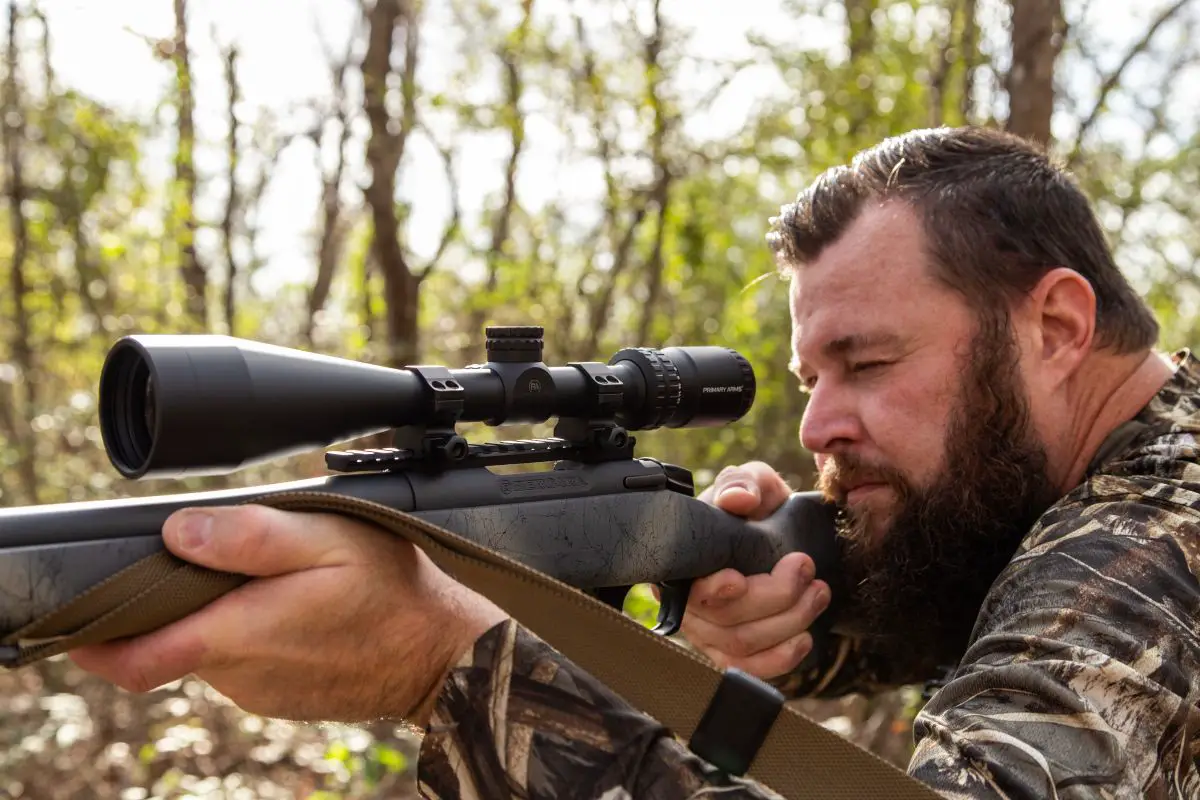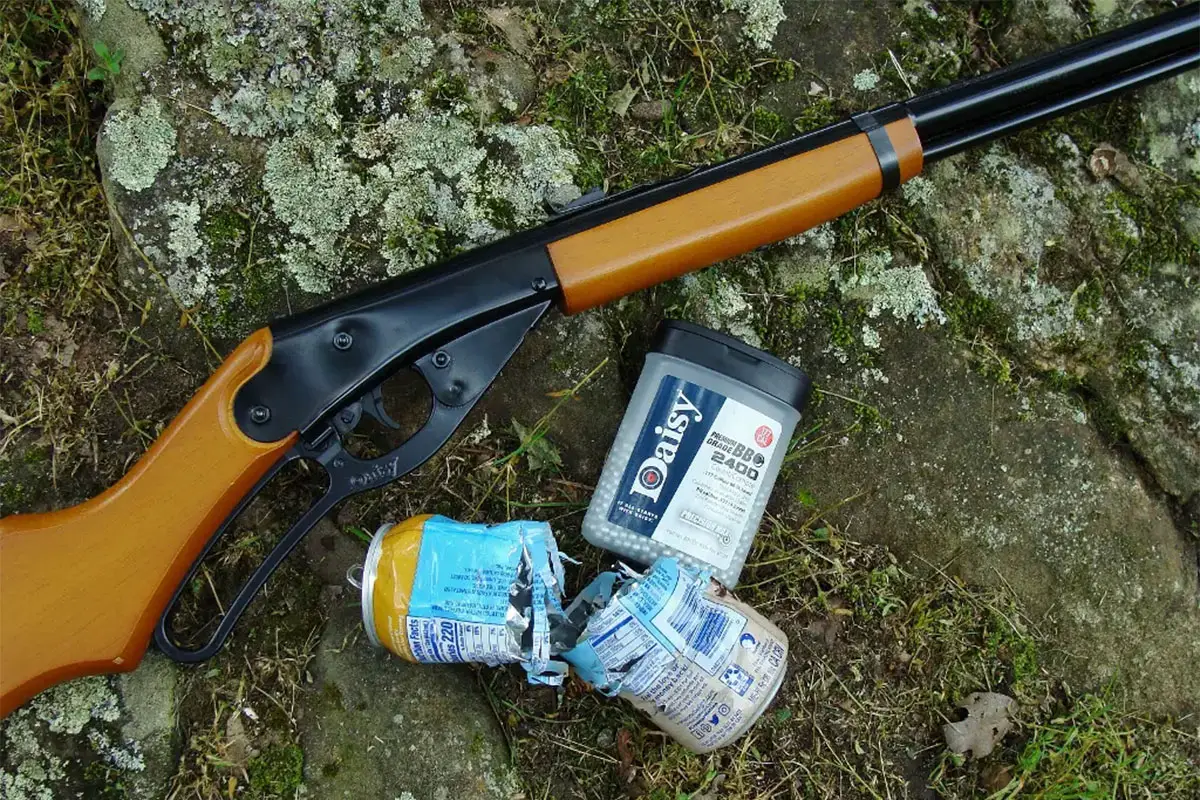7.2K
An Affordable Alternative to the Glock?
Palmetto State Armory’s PSA Dagger is getting a lot of attention because it is a GLOCK-style pistol chambered for the exceptionally popular 9mm cartridge. TLDR: The results were better than expected!
It’s probably safe to assume the AR-15 has claimed the title of “America’s Rifle.” As for pistols, the 1911 Government Model was – and possibly still is – the American champ. But given the undiminished popularity of the Austrian borne GLOCK, even in the USA, it can’t lag far behind. And imitation being the sincerest form of flattery, a growing list of polymer clones only narrows whatever gap exists.
Some are higher end versions sold for greater costs. But, apparently, another way to move a knockoff is to market it for less money. This is my review of such a pistol, Palmetto State Armory’s Dagger. Priced less than a GLOCK 19 but bearing a strong resemblance, the question begging for an answer is: How does the PSA Dagger perform?
The PSA Dagger Introduction

Produced by Palmetto State Armory – a firm known for AR-15s (see our article on building a low-cost AR-15 with Palmetto State Armory) – this polymer pistol was introduced during 2020. Since then, the Dagger has gone through several iterations. Supposedly, it’s been debugged along the way (a fairly common evolutionary practice). Based on a 9mm GLOCK 19 Gen-3, the Dagger bears a strong resemblance that extends to the internals but it’s not an identical clone. It will, however, fit inside a Glock 19 holster. More on that in a moment.
Another big difference is cost. The basic Dagger lists for around $300, a couple hundred bucks less than the GLOCK.
The 9mm Dagger Compact I received sported a flat dark earth finish. Its slide was protected by Cerakote that blended nicely with the polymer frame. Sold as a package, it was handed to me in a well-made color-coordinated soft-case – containing ten magazines! Surprised by the bubble-packed windfall, I checked the Palmetto State Armory website.

Low and behold, the same magazine rich package appeared for under $400. Upon viewing it initially, my first thought was “Prepper Kit.”
PSA Dagger Compact Specifications:
- Capacity is 15 +1.
- Unloaded with an empty magazine, it weighed 23 ounces on my scale.
- Fully loaded with 16 rounds (124 grain bullets) it weighed 29.8 ounces.
- The barrel measured 3.875 inches.
- Overall length was 7-inches and at its thickest point, the grip, it measured 1.25-inches.
GLOCK 19 Similarities:
- The Dagger uses the same magazines as a GLOCK 19.
- The ten packed with the Dagger were PMAGS.
- Supposedly most of its other parts will also interchange with a G-19, to include its frame, slide and barrel.
- The Dagger disassembles per the GLOCK process.
Dagger Review – GLOCK Comparison
Continuing the comparison to the GLOCK 19, I reviewed the PSA Dagger through that lens.
Dagger Disassembly
Basic disassembly – or field stripping – is relatively simple.
- Verify the pistol is completely unloaded, to include removal of the magazine.
- Pull the trigger (dry-fire).
- Retract the slide around ¼”, and two opposing tabs in the frame are pulled downward.
- The entire slide assembly can now be drawn forward off the frame for removal of the guide rod and the barrel.
Because it’s a simple process, it encourages ongoing maintenance.
Reassembly is in reverse order. It’s also simpler since fiddling with the small takedown tabs is unnecessary. Still, my first couple attempts with the Dagger resulted in some minor alignment hassles. But once I got the hang of it, the slide assembly slipped on to the frame without further difficulties.
A cautionary disassembly reminder that shouldn’t be necessary – but is. Perform the “completely unloaded” step at least twice (I’ve seen this go to hell). Also, isolate the firearm from any live ammo. Better to be safe than sorry!
More Comparisons to the GLOCK 19

Following the design of a GLOCK, the Dagger’s polymer frame houses steel rail-inserts held in place by pins. However the latter’s forward locking-block insert is longer. Sans interchangeable grip inserts, the serial-numbered polymer shell features aggressive but not-irritating textured panels, a high-cut trigger guard, and a GLOCK-type accessory rail. Also, the bottom of its mag well incorporates relief cuts, useful for the removal of recalcitrant magazines. But the slide-stop and mag catch are non-reversible.
Although it was finished in flat dark earth, the slide is stainless steel, and has fore and aft cocking serrations. Touted as a “Carry Cut” design, its front and rear edges are “smoother” for snag-free draws.
The sights are mounted per a GLOCK, opening the door to a plethora of aftermarket options. The Dagger I received had a standard slide, but an optics-ready version is offered, machined to locate a miniaturized red dot ahead of the rear sight.
The barrel, also stainless, is rifled with six conventional lands and grooves (more suitable for lead bullets). Near as I can determine, it’s rifled 1:10 – the same twist today’s bullet manufacturers use to test expanding projectiles. The muzzle sits flush with the slide, and has a cleanly cut recessed face, similar to the 11-degree crown seen on many HB rifles.

Like a GLOCK, the Dagger’s recoil spring is captive, but its guide rod is stainless steel.
The front and rear sights are steel (instead of plastic). The set on this PSA Dagger were fixed three-dots, and the rear was shaped to permit single-handed slide racks. It’s also drift-adjustable for windage.
One obvious departure was the trigger which differs from a GLOCK. Instead of a separate blade, PSA went with an articulated version similar to an S&W M&P. To me it was completely familiar. If it’s not your cup of tea, supposedly, it can be swapped out for one of many GLOCK versions. I didn’t try this.
The magazine release appeared to have an ample pad, but didn’t want to let go – at least, not without exaggerated efforts. It was a real bear for me and a couple others who tried it.
On a positive note, the Dagger’s fit and finish were better than expected. Play between the slide and frame was minimal in battery and the barrel was a tight fit. In theory, at least, it should shoot. Before hitting the range to find out, I gave it a cursory cleaning and lube to begin with a “clean” slate.
Range Results
December’s range conditions hovered in the low 30s but the day was calm and overcast, ideal for a meaningful accuracy assessment. No snow either, helpful for the recovery and inspection of fired cases. I started out by loading three magazines with five rounds each, to check for function while allowing the Dagger’s parts to “settle in.”
All shooting occurred from a “ready” position. The loads are listed in their firing orders.

9mm Speer 124-grain Lawman TMJ
Speer’s FMJ-type “Total Metal Jacket” is a cut above many so-called Q-loads. It’s performed very well for me in a number of 9mm pistols. Initial five-shot groups on 15-yard steel silhouettes were encouraging, and function was 100 %. The ejection pattern was consistent, and the recovered cases appeared normal.
The slide locked open as designed on the last shot, and each magazine popped free – once the release was fully depressed. This turned out to be an even greater challenge due to the chilly weather.

Full magazines came next BUT loading them with a full 15-rounds turned into a real battle! The last couple were nigh-impossible, and my seldom-used loading device didn’t fit. But perseverance finally triumphed and the final few rounds could be easily stripped out through a push of the thumb.
They chambered normally, too. Satisfied with the Dagger’s function, I zeroed back in on a trio of repainted 15-yard silhouettes and fired a 10-shot group on each, offhand (using both hands). A good omen: Tight clusters developed directly above the sights, each of which measured around two inches.
The 25-yard accuracy tests were shot on cardboard targets, off sandbags, to capture the results. Three 5-shot groups with the same TMJs produced consistent results averaging less than 2 ½-inches – better than many pistols costing two or three times as much! And once again, the groups were close to the sights.
9mm Speer 124-grain Gold Dot JHPs
The next load up, Speer’s nickel-plated defensive offering is another high-confidence round. From the Dagger, it produced similar downrange results and functioned without issues. The ejection pattern was also consistent, and the fired cases showed no signs of problems.
9mm Federal 135-grain HYDRA-SHOK JHP “Low Recoil”
The last load tested, results were on par with the other loads and free of negative surprises. As for recoil, there may have been less. But, overall, the Dagger was completely manageable.


Hits & Misses
I wrapped up the Dagger’s range session by shooting it from various angles with Speer TMJs, some of which were fired exclusively with my support (left) hand. The pistol ran without a hitch, and, across the board, accuracy was better than expected.
The trigger behaved similarly to many other striker-fired designs. It combined a distinct reset with a consistent pull (the above listed 6 ¼ lb. weight was recorded after the range session).
My only real gripe was the magazine release. As a full-time range rat, I’ve had the opportunity to play with lots of different pistols. A few had fiddly mag releases, but this one was in a league all its own.
The oft-taught partial flip failed to remedy this issue, which is apparently hit or miss. I think it’s more a matter of the shooter’s hand size relative to the grip design. For those that encounter the problem, a possible fix is an aftermarket GLOCK release.
Not a fault of the pistol, but fully loading the PMAGS with 15 rounds was a battle (my frame of reference includes sub-gun mags). The process became easier once they’d been loaded for a few days, but I’d spring for a loading device – or different mags.
As for handling, I’m more of an S&W M&P guy. Typically, a standard GLOCK indexes muzzle-up. But, despite the absence of interchangeable grip inserts, the Dagger was more of a natural pointer for me.
Another huge plus: It shot to its sights. Speaking of which, more options are available there to include night sights, etc.
The Dagger will no doubt fit some unmolded GLOCK 19 designs. It fit two different GLOCK 19 holsters that came from Falco Holsters.


Lights and Lasers
I slipped a small QD Olight PL Mini 2 Valkyrie on the Dagger’s accessory rail, using its supplied GLOCK adapter. It locked securely in place and was a nice match for the pistol.
The Dagger does lack a loaded chamber indicator, but nickel-plated cartridges were visible in the small gap adjacent to its extractor. As a “two-fer” they also provide a useful means to differentiate defensive and practice loads.

Parting Shots
A post-shooting examination (and cleaning session) indicated no obvious problems. Then again, in total, I only fired around 200 rounds – far from a comprehensive test. However, the Dagger does come with a lifetime warranty. Is the Dagger worth it? Maybe…
The original 9mm GLOCK-17 gained rapid acceptance among law enforcement agencies and civilians. The compact 15 +1 G-19 was a logical progression. Decades later, both remain polymer gold standards regarding reliability and durability. Most GLOCK devotees will have little reason to switch, but not everyone is wedded to this brand.
Also, some shoot infrequently at best, and money is often a concern. Further rationale for the purchase of a Dagger? Maybe for use as a squirreled-away spare, or even a home defense gun. Tricked-out higher end pistols can invoke litigious perils and, the expense of a competent attorney aside, a firearm used for such purposes will likely do time in an evidence locker.
Further rationale? Returning to the Prepper Kit thought, I dragged out a 9mm Windham Weaponry AR-15 carbine, configured to run on GLOCK-17 magazines. Both the 15-shot Dagger Compact and “pistol caliber carbine” functioned with magazines of either design – a reassuring footnote, given the ten PMAGS that came with the pistol.

In closing, unlike the AR-15, like a GLOCK, the PSA Dagger has no frame-mounted safety lever. However, the” safe action” system (and its variants) is safe enough – if supported by proper training. That, and adherence to Rule #3 which stipulates strict finger-off-trigger discipline.
For more about this system and other handguns of all kinds, see my book Handguns: A Buyer’s and Shooter’s Guide.
Source link: https://survivedoomsday.com/psa-dagger-review/ by Steve Markwith at survivedoomsday.com






